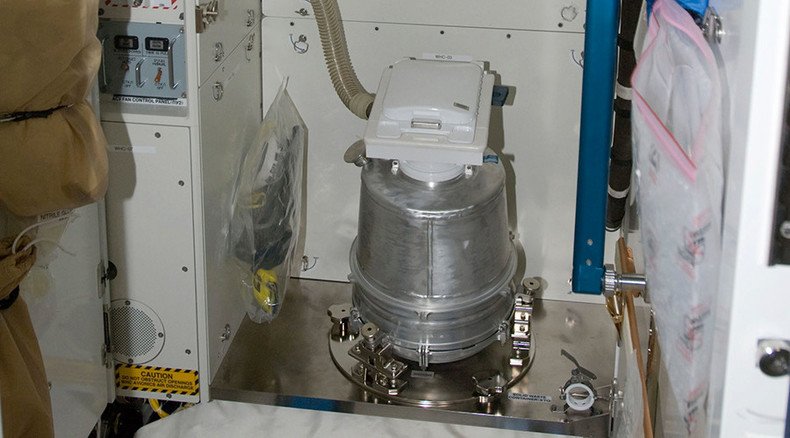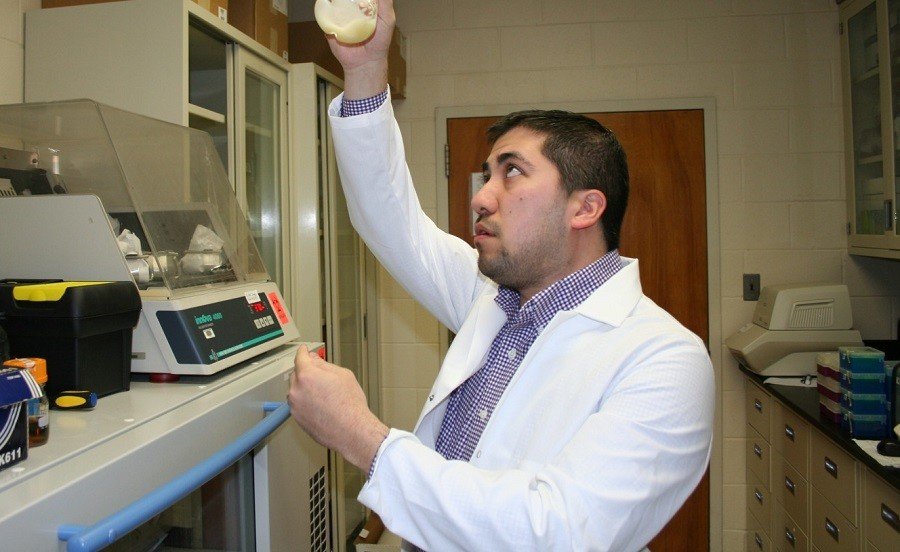New NASA grant explores turning human poop into astronaut meals

With its interest in manned missions to the Moon and Mars, NASA is looking for renewable ways to feed its astronauts for the long haul. So the space agency granted $200,000 a year to a project that recycles human poop into man-made food.
NASA selected eight university-led proposals to receive $1.6 million worth of grants over a three-year period. The projects each study “innovative, early stage technologies that will address high-priority needs of America's space program,” the agency said in a press release.
One of them turns astronaut poop into their food.

The project ‒ called Synthetic Biology for Recycling Human Waste into Food, Nutraceuticals, and Materials: Closing the Loop for Long-Term Space Travel ‒ is run by Mark Blenner of Clemson University in South Carolina.
"These early career researchers will provide fuel for NASA's innovation engine," Steve Jurczyk, associate administrator for NASA's Space Technology Mission Directorate at the agency’s headquarters in Washington, DC, said in the statement.
READ MORE: NASA-funded study may clear way for human return to Moon – and Mars
"Technology drives exploration, and investments in these technologies and technologists is essential to ensure NASA and the nation have the capabilities necessary to meet the challenges we will face as we journey to Mars,” Jurczyk continued. “The faculty selected and their colleagues help assure a robust university research community dedicated to advanced space technology development."
Since NASA ended its space shuttle program in 2011, it has relied on commercial carriers ‒ like SpaceX and Orbital Sciences ‒ and other countries’ space programs to ferry supplies to astronauts aboard the International Space Station (ISS). But delayed launches and explosions have proved problematic for feeding those orbiting Earth, so NASA decided to look for ways to produce food outside the atmosphere.
Cosmic salad: ISS astronauts to eat first-ever space-grown lettuce http://t.co/PUtSRNCDBXpic.twitter.com/CIGkc7dtgO
— RT (@RT_com) August 10, 2015In May, ISS astronauts began growing red romaine lettuce in the final frontier by watering the plant roots. Half of the harvest was then transferred to Earth for testing after 33 days of growing in space. Taste-testing began last Monday.
In Russia, the Institute of Biophysics proposed growing massive gastropods to develop self-sustaining and self-regenerating habitats that provide protein for future human missions.
“Two-thirds of the proteins a cosmonaut consumes in space should come from animal sources,” Vladimir Kovalev, a senior researcher at the Institute of Biophysics in Siberia, told RT. “But on an extraterrestrial base, space is limited, and keeping cattle is impossible.”
Major Tom to Ground Control: Oregon brewery launches #spacebeerhttp://t.co/rbg9an1JHIpic.twitter.com/Tjkr8Abzxp
— RT America (@RT_America) March 20, 2015At the beginning of May, the first-of-its-kind espresso maker that functions in microgravity arrived aboard the ISS so that Italian astronaut Samantha Cristoforetti could have her daily dose of java. Of course, caffeine is a known laxative, so perhaps the luxury coffee machine was the catalyst to get things moving for this latest NASA grant.
The space agency also isn’t the only organization interested in recycling human waste.
Amid its multi-year drought, "California water managers and environmentalists" began pushing the idea of recycled sewage water, hoping that such a system could convert the hundreds of billions of gallons of treated sewage that is already directed into the Pacific Ocean into drinking water.
Billionaire activist Bill Gates funded an innovation in water filtration that turns human poop into drinking water. It burns the refuse to produce electricity and potable water, and is designed to be used by the 2.5 billion people – or 40 percent of the global population – that have no access to safe sanitation.
Gates has demonstrated the OmniProcessor, which was designed and built by Seattle engineering firm Janicki Bioenergy, by drinking the water it has filtered.
He wrote on his blog: "The water tasted as good as any I’ve had out of a bottle. And having studied the engineering behind it, I would happily drink it every day. It’s that safe."
In 2012, the Microsoft founder, through the Bill and Melinda Gates Foundation, set up the ‘Re-invent the Toilet Challenge’ to create a new commode that would operate without running water, electricity or a septic system.












